Our non-alcoholic gin and tonic recipe is refreshing, crisp, and lightly floral. It’s super simple to make and is perfect for sharing with friends who are exploring an alcohol-free or low-alcohol lifestyle.
This post contains affiliate links.
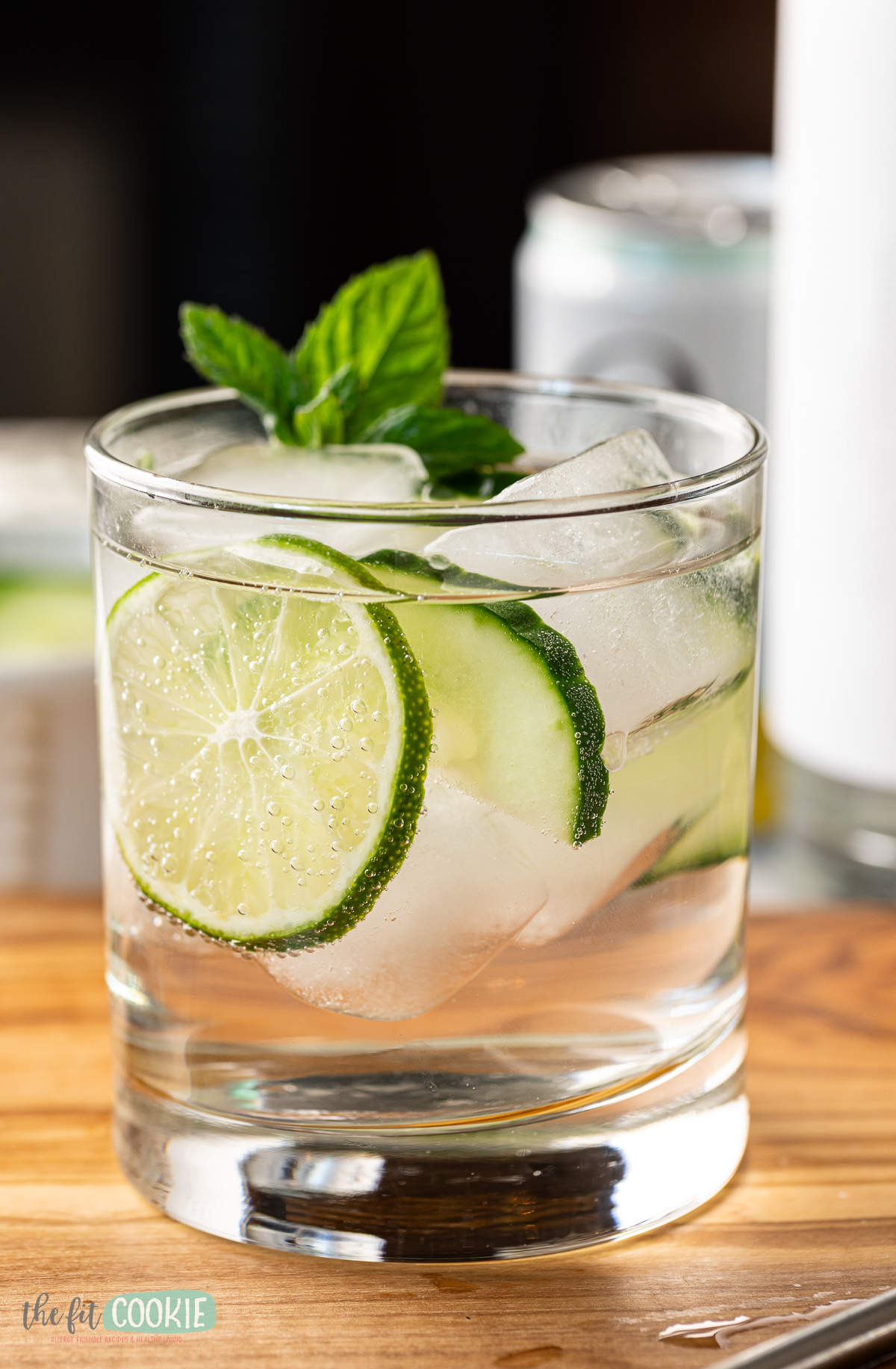
We’re back with another super simple but delicious non-alcoholic cocktail: a virgin gin and tonic!
I don’t drink much alcohol (if any) due to health issues, so when I discovered non-alcoholic spirits a couple of years ago I was so excited to create delicious drinks that wouldn’t cause me to have severe histamine headaches.
It’s been a lot of fun coming up with different alcohol-free drink recipes to share with readers! More people are exploring a low-alcohol or completely alcohol-free lifestyle for various reasons, and it’s great to see the non-alcoholic drink market grow by leaps and bounds.
I’m looking forward to seeing new products coming onto the market in the future and I plan on sharing more great virgin cocktail recipes with you in the coming months! In the meantime mix up this refreshing gin and tonic and check out our mocktail recipe roundup for even more great recipes.
Why you’ll love this recipe
Whatever your reasons for reducing or eliminating alcohol from your diet, this virgin cocktail is very simple yet delicious. You don’t need a lot of extra additions (like syrups or bitters) making it a great option if you don’t have a pantry full of these extras.
Our gin and tonic mocktail is also easy to customize: use different tonic water brands or different gin alternatives for different flavor profiles. I love the floral hint in our version but you can use a different tonic water if that’s not your thing.
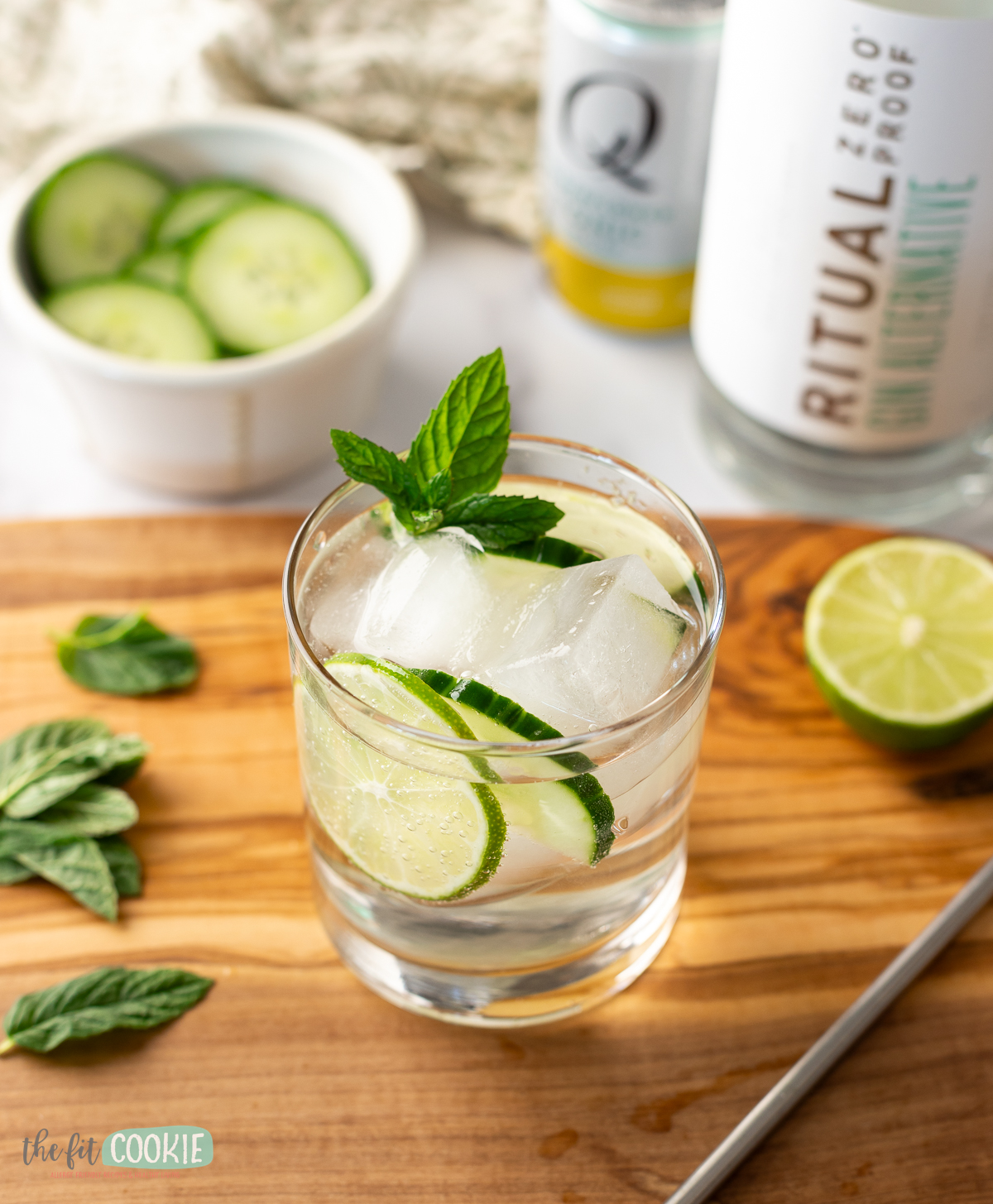
What brand of non-alcoholic gin should I use?
With this recipe, you’ll want to use a high-quality gin alternative that you enjoy. There are quite a few different ones on the market now, I have only tried 2 brands of alcohol-free gin so far: Monday and Ritual Zero Proof.
For this recipe, I tried both the Monday gin alternative and the Ritual Zero Proof gin, and the Ritual gin tastes better to me in most drinks I mix up. The Ritual Zero Proof rum and tequila alternatives are also good.
I haven’t tried the Lyre’s gin alternative specifically, but I have tried a few other flavors of Lyre’s and they smell nice but really don’t have a lot of flavor to me (other people have confirmed this as well), so I haven’t purchased any more of the Lyre’s. The bottles make nice photos though.
I haven’t tried out other brands yet, like Free Spirit, so I’m not sure how other brands compare with Ritual or Monday. And to be completely transparent, I haven’t actually tried real gin, so I can’t compare it to the real thing. But I do like the taste of the Ritual Zero Proof gin alternative.
Here are a few other gin alternatives you can try in this recipe. I haven’t tried these other brands so I’d go to the Amazon pages and see the reviews. I didn’t include ones here that don’t seem to have good overall ratings on Amazon.
- Cut Above
- Lyre’s Dry London Spirit
- Pearson’s Botanicals (this comes in a few different flavors)
- Crystal Dutch Dry
- CeroCero
- Pentire
- Fluere
- New London Light
- Caleño
- Statera
- Free Spirits Gin
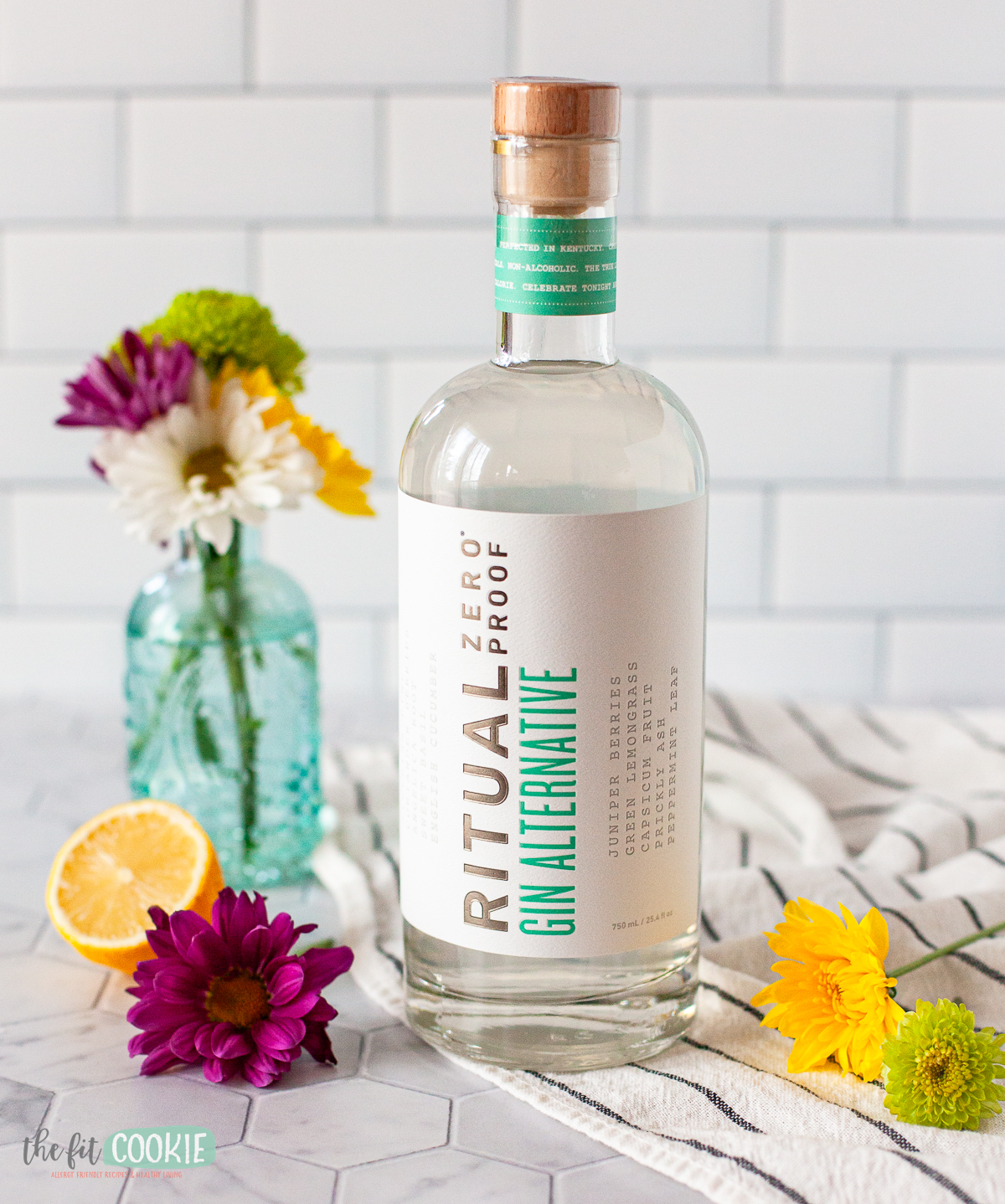
Does this taste like real gin and tonic?
One thing to keep in mind is that my list of gin alternatives above likely will not taste exactly like real gin, no matter how well they make their product.
Because let’s be honest, nothing will taste exactly like the real thing unless it is the real thing. For example, I enjoy a good tequila, and Ritual Zero Proof tequila is a good option, but it doesn’t taste the same.
One common complaint I see on these spirit alternative reviews is that they don’t taste just like real gin (or real tequila, etc.). Which is a fair complaint. But I do think these spirit alternatives and drinks are quite close and they are great options for people who want specific drinks but don’t want the alcohol.
And full disclosure: I don’t know what real gin tastes like since I’ve never had it myself.
But our version of gin and tonic is still delicious and refreshing, even if it does not taste exactly like the real thing. And I think Ritual Zero Proof make some of the best non-alcoholic spirits I’ve currently tried.
Which brand of tonic water is best for this recipe?
I tried 3 or 4 different kinds of tonic water for this recipe and tested out some flavors. Here are my thoughts on the ones I tried:
Betty Buzz: one of my favorite tonic waters from the 4 I tried for this recipe, it’s mellower and less bitter than the Fever Tree light tonic water. At 1.4 grams of sugar per ounce (13 grams of sugar per 9 ounce bottle), and has a bit more sweetness than the Fever Tree but less sugar than the Q Mixer elderflower tonic water I used.
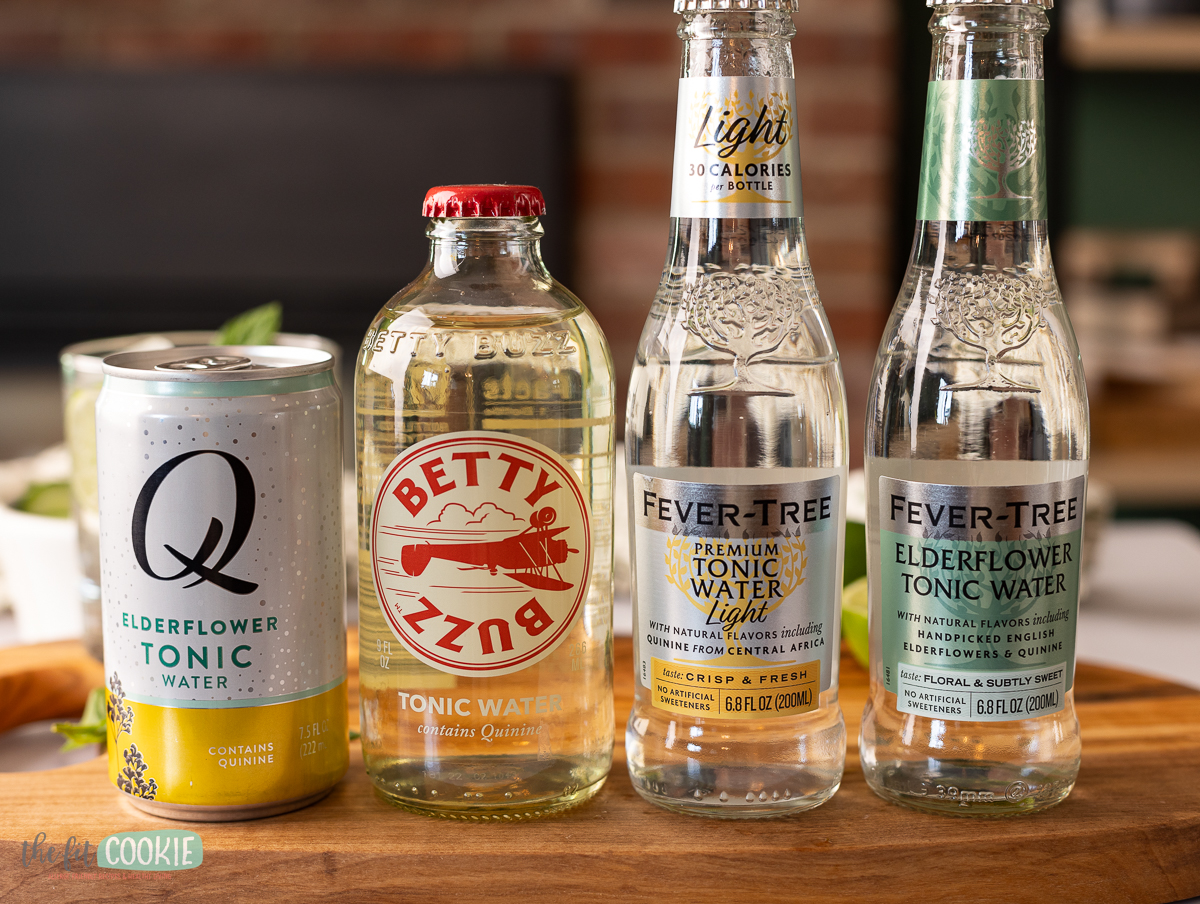
Q Mixers elderflower tonic water: this one is my favorite besides Betty Buzz and the one I settled on for this recipe. It does have more sugar, but it has a pleasant and light floral flavor and less bitterness from the quinine. I loved this one in this gin and tonic recipe since I like a sweeter cocktail and the elderflower added a nice touch. This one is the sweetest at 2.5 grams of sugar per ounce (19 grams of sugar per 7.5 ounce can).
Fever Tree Tonic Water Light: this one is the most bitter out of the 4 listed, but it isn’t too bad for the amount of sugar. This variety only has 1 gram of sugar less per bottle than their elderflower flavor. This one has 1.2 grams of sugar per ounce (8 grams of sugar per 6.8 ounce bottle).
Fever Tree elderflower: this is a good tonic water with a light floral flavor similar to the Q Mixer elderflower tonic water. It is slightly more bitter than the Q Mixer elderflower version.
How to make this virgin gin and tonic lower in sugar
As we mentioned above, depending on the brand of tonic water you use for your drink, the amount of sugar in a gin and tonic can widely vary.
Most of the tonic water brands I tested with this recipe are a bit lower in sugar than some other brands, but if you want a truly low-sugar or completely sugar-free gin and tonic, there are still options!
I haven’t tried these tonic waters listed here except for the Fever-Tree Light tonic water. I’m also only listing the naturally sweetened options. Some other brands of diet tonic waters, like Schweppes or Canadian Dry, are sweetened with saccharin.
- Fever-Tree Premium Tonic Water Light: still has 8 grams of sugar per 6.8 ounce bottle so less than others but not super low in sugar.
- Q Mixers Light Tonic Water: contains erythritol, only contains 4 grams of sugar per 7.5 ounce can.
- Zevia tonic water: completely sugar free and sweetened with stevia
- Fever-Tree Refreshingly Light Premium Indian Tonic Water: contains 5.8 grams sugar per 6.8 ounce bottle, naturally sweetened.
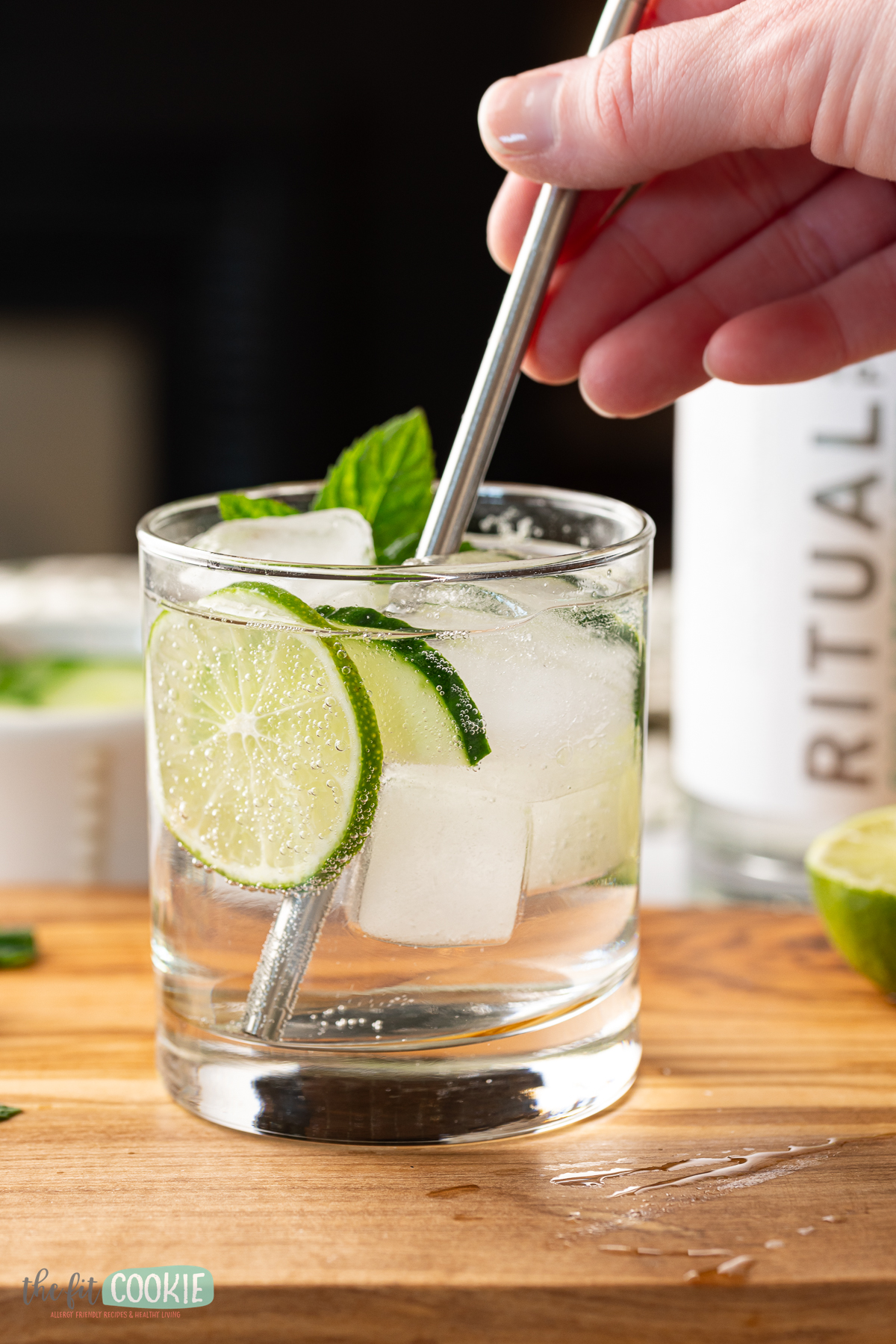
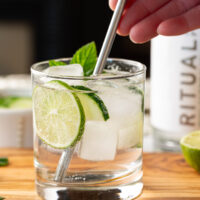
Best Non-Alcoholic Gin and Tonic Recipe
Ingredients
- 2 ounces Ritual Zero Proof gin alternative
- 6 ounces Q Mixer elderflower tonic water
- Ice cubes
- Garnish: lime slice, cucumber slice, and mint sprigs
Instructions
- Add 2-3 ice cubes to a glass tumbler or highball glass.
- Add 2 ounces of Ritual Zero Proof gin alternative (or your favorite non-alcoholic gin).
- Add 6 ounces of your favorite tonic water (my favorites are Betty Buzz or the Q Mixer elderflower tonic water).
- Garnish with a lime slice, a cucumber slice, and a mint sprig.
Video
Nutrition
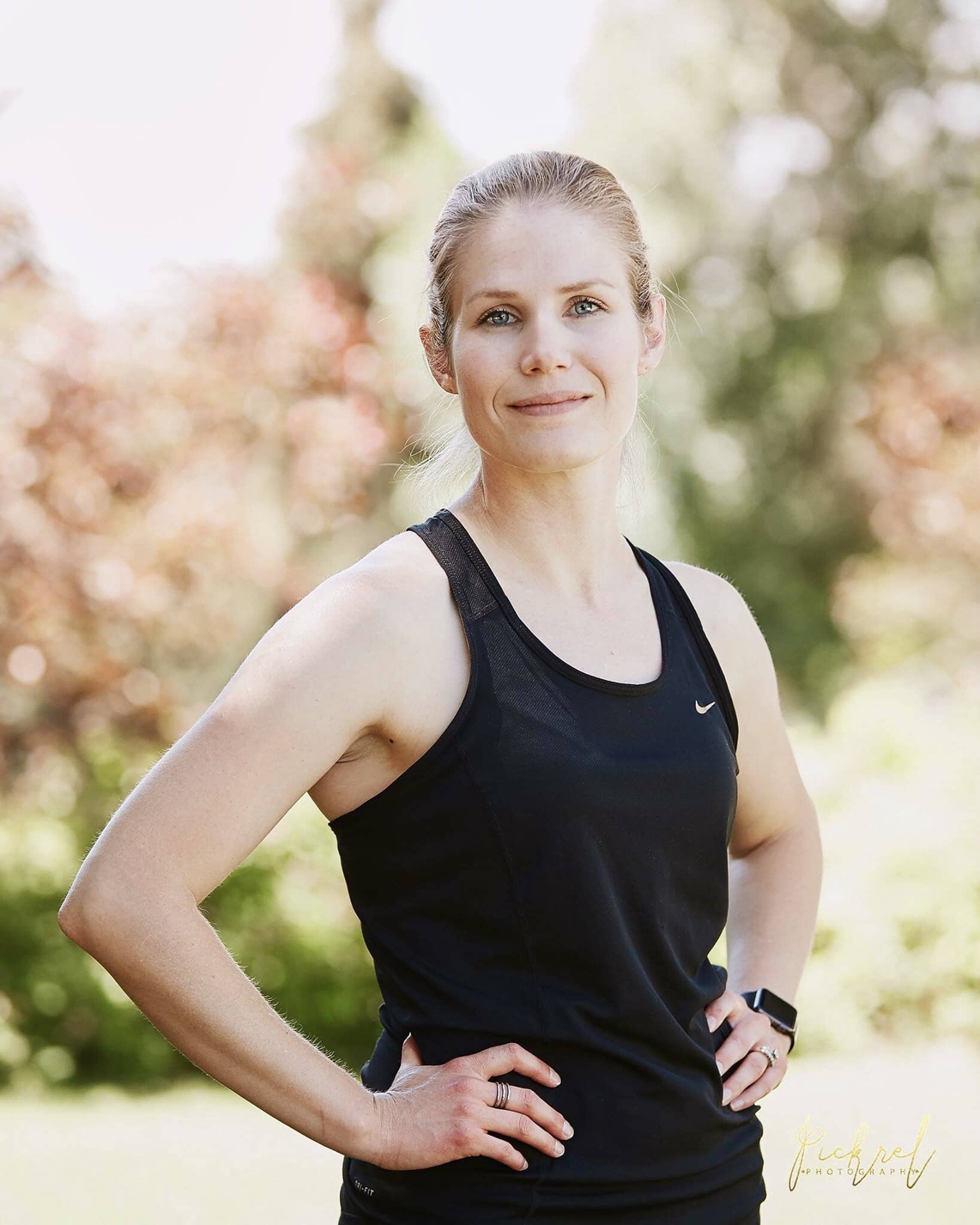
Sarah Jane Parker is the founder, recipe creator, and photographer behind The Fit Cookie. She’s a food allergy mom and healthy living blogger based in Wyoming. Sarah is also an ACSM Certified Personal Trainer, ACE Certified Health Coach, Revolution Running certified running coach, and an ACE Certified Fitness Nutrition Specialist
